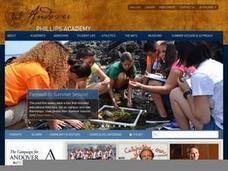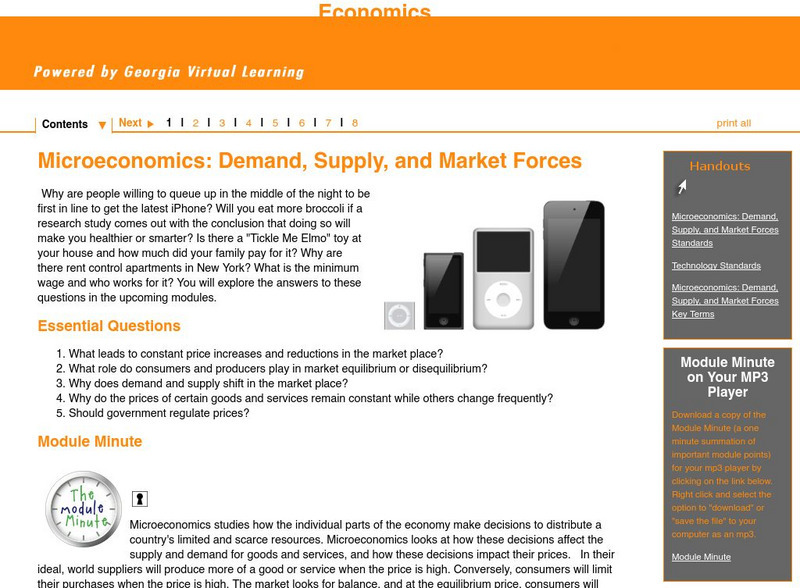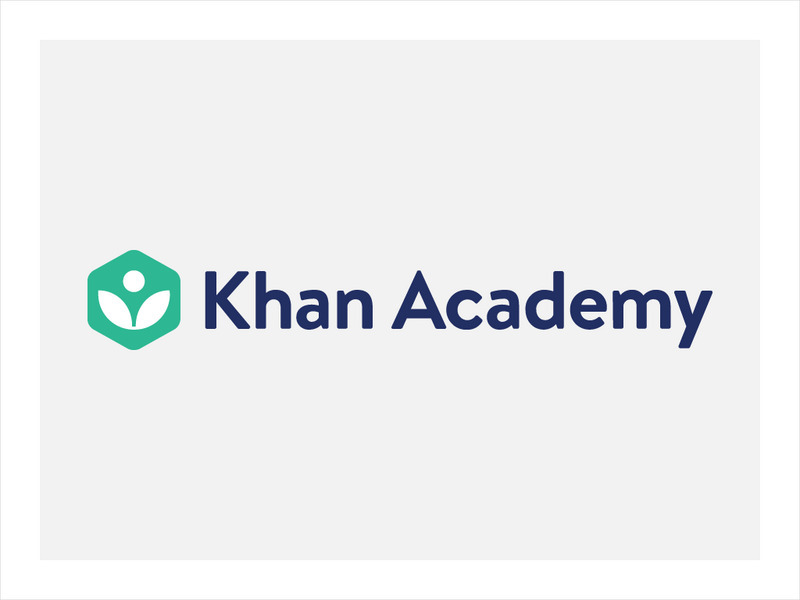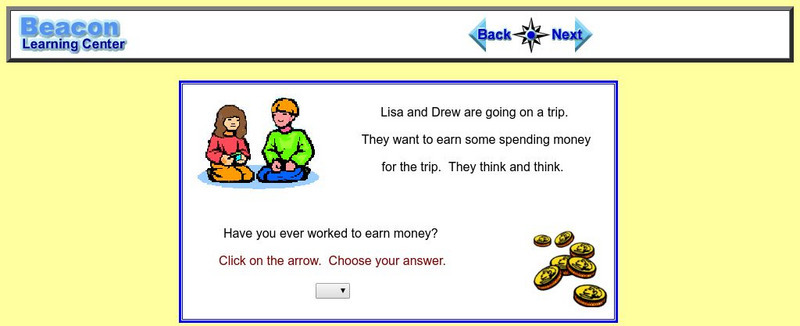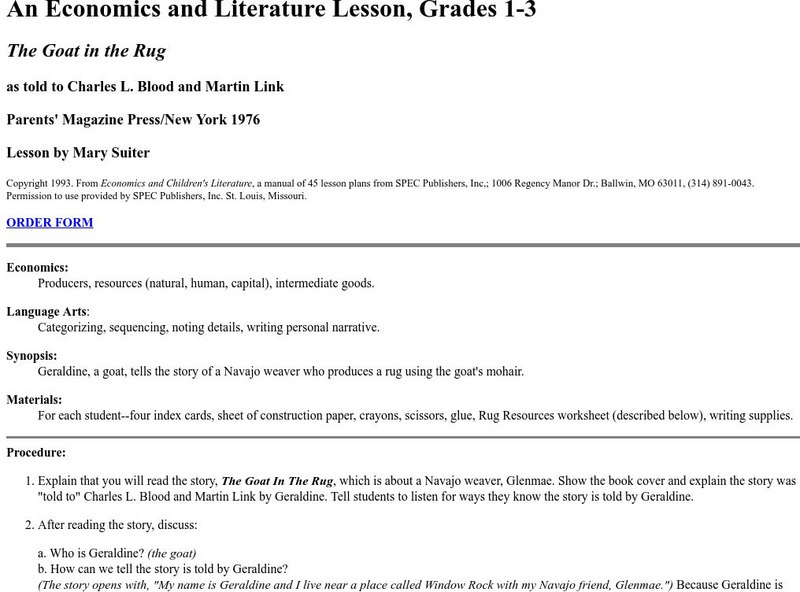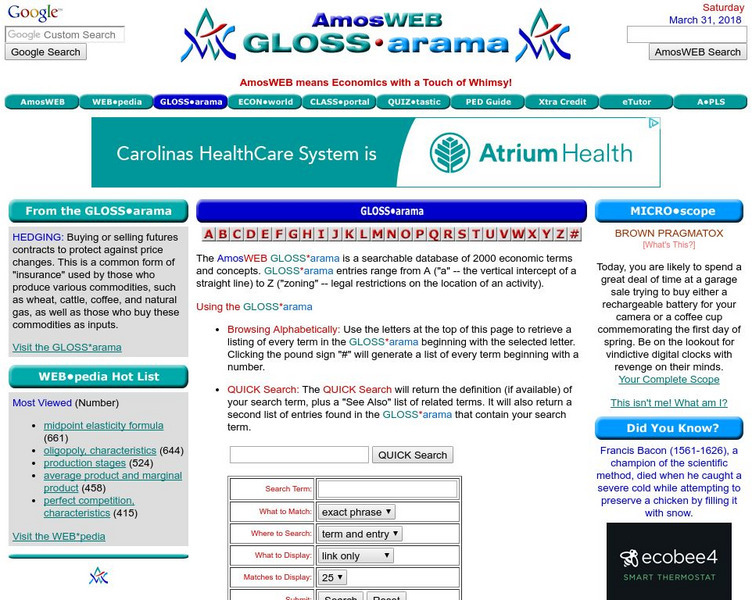Curated OER
Spraying Strawberries
Students decide how many times to spray a strawberry crop. They apply marginal analysis and discover the "law of diminishing returns."
Curated OER
Exploration of North America
Fifth graders examine some famous explorers who have helped to discover our country. They discuss explorers from three countries today. They are: Spain, Portugal, and England.
Curated OER
Costs & Benefits
Young scholars reinforce the concept of the true costs being what is given up by doing something -- normally referred to as opportunity costs.
Curated OER
A Sense of West Virginia
Students consider their perceptions of the world through their 5 senses while visiting the West Virginia State Museum. In this West Virginia history lesson, students discover how knowing about the past helps with their understanding of...
Curated OER
Coal and The Kentucky Economy
High schoolers read about and study what an economy is. Students then answer questions that require them to define what an economy is and list the components of a healthy economy. High schoolers also list two ways that coal helps the...
Curated OER
Dressing in Early American Times
Fifth graders, by doing research and seeing actual and simulated artifacts, gain knowledge of and make comparisons about clothing in the Colonial and early Republican eras with attire of present time.
Curated OER
What Are the Ethical Considerations
Students investigate the socioeconomic and environmental issues associated with radon. They examine the laws that exist in New Jersey that pertain to real estate. They work in groups to design new legislation that addresses associated...
Curated OER
Money, Banks, & Financial Institutions
Students engage in a study of financial institutions that includes the banking industry. They participate in a research study using different resources. They are introduced to the concept of bartering and how it is used as a replacement...
Curated OER
Food Travels and Preservation
Fourth graders study food processing and distribution. For this food processing lesson, 4th graders investigate various methods of food preservation. Students study methods of food distribution.
Utah Education Network
Uen: Producing and Consuming
Lesson that helps students understand the difference between producers and consumers. Students create booklets, making them producers, and then use the booklets to complete the lesson, making them consumers.
Council for Economic Education
Econ Ed Link: What Does the Nation Consume?
This lesson will focus on what the nation consumes and how that is measured by Gross Domestic Product (GDP). In the United States, the goods and services produced for household consumption account for about two-thirds of total output.
Alabama Learning Exchange
Alex: Producers and Consumers
This instructional activity will teach the difference between producers and consumers. It provides an interactive way for young scholars to get involved and actually become producers and consumers.
Georgia Department of Education
Ga Virtual Learning: Economics: Microeconomics: Demand, Supply and Market Forces
Economics learning module with interactive assignments, projects and assessment discusses the interplay of demand, supply and market forces.
Khan Academy
Khan Academy: Lesson Overview: Consumer and Producer Surplus
This lesson introduced the basics of a branch of economics known as welfare economics, which is interested in how the allocation of resources affects well-being. The most important concepts used in welfare analysis are total surplus and...
Khan Academy
Khan Academy: Economic Efficiency
Read about consumer surplus, producer surplus, and deadweight loss. Did you know that demand and supply diagrams can help us understand more than supply and demand curves and equilibrium? They can also help us understand economic...
Council for Economic Education
Econ Ed Link: We Are Consumers and Producers
This lesson plan is geared toward beginning economics concepts. "In this lesson you are going to learn more about how you and others are consumers and producers."
Council for Economic Education
Econ Ed Link: Hey, Mom! What's for Breakfast?
In this lesson young scholars working in cooperative groups will: 1.Discuss food items they consume for breakfast. 2.Investigate elements of foreign culture, particularly food. 3.Use map skills to locate selected foreign nations....
University of Nebraska Omaha
Ecedweb: Explorations in Economic Supply, Part I
Examines how supply relates to economic decision making. Using the example of purchasing blue jeans, students take the role of producer to determine how many blue jeans they would supply to the market. Includes links and discussion...
Beacon Learning Center
Beacon Learning Center: Business Buddies
Help characters Lisa and Drew learn simple economic principles by choosing what goods they will need for their lemonade stand. Continue exploring economic concepts by determining the producers, services, and consumers associated with the...
SMART Technologies
Smart: Economic Review Lesson
This activity reviews goods, services, producers, and consumers. The lesson consist of sorting, fill in the blank, writing, and racing car review quiz.
University of Nebraska Omaha
An Economics and Literature Lesson: The Goat in the Rug
This is a lesson plan geared toward first through third grades, cross-curricular, dealing with economics and literature. "Learn about economics: producers, resources (natural, human, capital), intermediate goods; and Language Arts:...
Other
Economic Glossarama: Supply
This economic glossary provides a definition of supply, and 2000 other economic terms and concepts.
ClassFlow
Class Flow: Economics Vocabulary
[Free Registration/Login Required] This flipchart explains basic economics vocabulary such as producers, consumers, and different kinds of resources; limited, unlimited, natural and human. Student assessment items are included.








